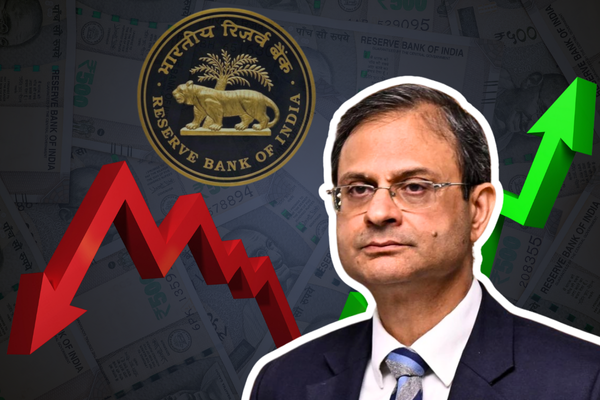.png)

Srinivasa Rao, ex-Economic Advisor at Finance Ministry, spent 28 years in IES, and now heads strategy at Bajaj Finserv.
August 7, 2025 at 12:39 PM IST
The Reserve Bank of India’s latest monetary policy decision reflects a dovish hold, as anticipated. This aligns with the thinking the central bank is still evaluating the impact of the cumulative 100-basis-points rate cuts since February 2025 and the transmission effect may need to play out a bit more.
The RBI’s decision to halt the ongoing rate cut cycle aligns with the current economic indicators and the prevailing global geopolitical situation. The positive impact of these rate cuts is anticipated to gradually manifest through better credit growth and enhanced consumer spending, especially in the retail and housing sectors.
Further, the announced 100-basis-point reduction in CRR will add to the ₹4 trillion liquidity surplus in the banking system. The decision to maintain the repo rate at 5.5%, coupled with a neutral stance and a projected GDP growth of 6.5% for 2025-26, reinforces confidence in India’s economic trajectory amid a challenging global environment.
The overall tone of the policy indicates a clear emphasis on supporting growth while remaining vigilant to evolving global economic and political developments.
On the growth front, the RBI kept its GDP growth forecast unchanged. However, the Governor acknowledged uncertainties surrounding external demand, particularly due to tariff-related developments and persistent geopolitical tensions.
These factors pose downside risks to India’s growth outlook. While the RBI remains flexible in its response to such unforeseen events, we believe monetary policy alone may be insufficient to counter these forces. Fiscal policy, with its direct impact on demand and investment, will likely play a more prominent role in mitigating these risks.
The sharp downward revision in the inflation forecast to 3.1% for 2025–26 signals a benign trajectory for the remainder of the fiscal year, supported by favourable supply-side dynamics and a high base effect. However, this base effect is expected to fade from April-June 2026, as reflected in the RBI’s projection of 4.9% for that quarter. Despite this uptick, inflation is expected to remain within the RBI’s comfort zone, reinforcing its commitment to growth-supportive policies.
India’s external sector continues to demonstrate resilience, with a stable current account deficit, robust foreign exchange reserves, and strong external financing flows. These factors contribute to stability in the foreign exchange market. The recent depreciation pressure on the rupee is largely attributable to tariff-related uncertainties, which are expected to ease as negotiations progress. Should a deal materialise, we anticipate the USDINR to reverse toward 85; in the absence of a deal, it may drift toward the 88–89 range.
Looking ahead, the October MPC meeting will be a “live” one, with critical data points expected on both the domestic economy and the external front, particularly regarding tariff developments. If April-June growth data disappoints, we foresee a 25-bps rate cut in October 2025.




